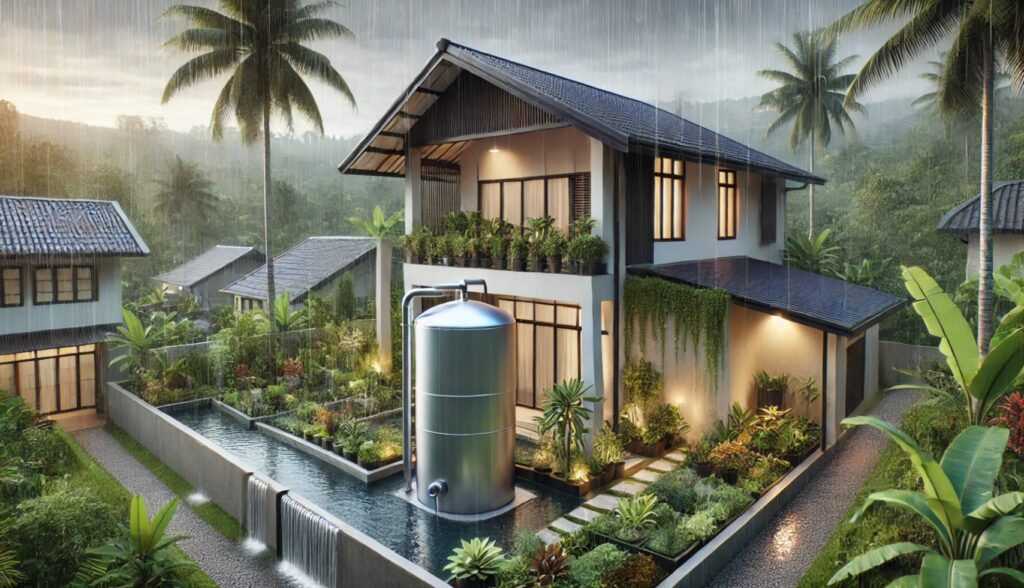Water scarcity is becoming an increasingly pressing issue worldwide, and Malaysia is no exception. Despite the country’s abundant rainfall, inefficient water management and growing demand often lead to water shortages and higher water bills. Rainwater harvesting is an innovative and sustainable solution to address these challenges. By collecting and utilizing rainwater, Malaysian homeowners can significantly reduce their water bills while contributing to environmental conservation. Let’s explore how rainwater harvesting works, its benefits, and how much you could save.
What Is Rainwater Harvesting?
Rainwater harvesting is the process of collecting and storing rainwater for reuse. This system typically involves a roof catchment area, gutters, a storage tank, and a filtration system. The collected water can be used for various non-potable purposes, such as gardening, washing vehicles, flushing toilets, and even laundry, thereby reducing the reliance on treated water for these acti
How Rainwater Harvesting Reduces Water Bills
Malaysia experiences an average annual rainfall of 2,400 mm, providing ample opportunities to collect rainwater. By using harvested rainwater for everyday tasks, households can cut down their consumption of treated water, which is charged by utility companies. This can lead to substantial savings, especially for larger households or those with significant water usage for outdoor activities like watering gardens.
Calculating Potential Savings
Let’s break down how much a typical household in Malaysia can save with a rainwater harvesting system:
Assumptions:
- Monthly water bill: RM 80
- Rainwater harvesting system cost: RM 5,000
- Water savings: 40% of the monthly bill
- System lifespan: 20 years
Monthly Savings:
40% of RM 80 = RM 32
Annual Savings:
RM 32 x 12 = RM 384
Total Savings Over 20 Years:
RM 384 x 20 = RM 7,680
After deducting the system installation cost of RM 5,000, the net savings over 20 years would be RM 2,680. Additionally, rising water tariffs could increase these savings even further.
Environmental Benefits of Rainwater Harvesting
Rainwater harvesting is not just a financial investment—it’s also a step toward environmental sustainability. Here’s how:
- Conserves Water Resources: Reduces dependence on treated water, preserving Malaysia’s water reserves.
- Prevents Flooding: Collecting rainwater minimizes runoff, reducing the risk of flash floods in urban areas.
- Reduces Energy Usage: Less reliance on water treatment plants means lower energy consumption and fewer carbon emissions.
Additional Benefits for Homeowners
Beyond financial and environmental benefits, rainwater harvesting offers several practical advantages:
- Independence: Provides a backup water source during water cuts or shortages.
- Improved Garden Health: Rainwater is free of chemicals and chlorine, making it ideal for plants.
- Customizable Systems: Rainwater harvesting systems can be tailored to fit any home size and budget.
Payback Period
The payback period for a rainwater harvesting system is relatively short, considering the savings and benefits. Using the example above:
RM 5,000 (installation cost) ÷ RM 384 (annual savings) = ~13 years
After 13 years, the system essentially pays for itself, with the remaining years providing pure savings and benefits.
A Sustainable Solution for Every Home
Rainwater harvesting is a practical and sustainable solution to rising water costs and environmental challenges in Malaysia. With its ability to reduce water bills, conserve natural resources, and enhance water security, it’s an investment that benefits both homeowners and the environment. Whether you’re looking to save money, protect the planet, or ensure a reliable water supply, rainwater harvesting is a step in the right direction. Start reaping the rewards today by installing a rainwater harvesting system for your home.

